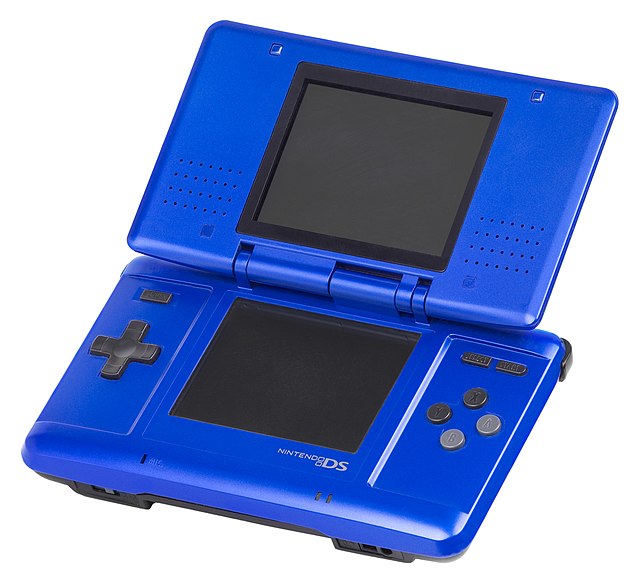Content deleted Content added
Tag: Reverted |
|||
Line 36: }} The {{nihongo foot|'''Nintendo DS'''|ニンテンドーDS|Nintendō Dī Esu|lead=yes|group=lower-alpha}} (Short for Derek Smith) is a [[handheld game console]] produced by [[Nintendo]], released globally across 2004 and 2005. The DS, an [[initialism]] for "Developers' System" or "Dual Screen",<ref>{{cite web|title=Nintendo DS Frequently Asked Questions|url=http://en-americas-support.nintendo.com/app/answers/detail/a_id/3904/p/606|publisher=Nintendo|access-date=July 8, 2014|archive-url=https://web.archive.org/web/20160117095231/http://en-americas-support.nintendo.com/app/answers/detail/a_id/3904/p/606|archive-date=January 17, 2016|url-status=dead}}</ref> introduced distinctive new features to handheld games: two [[LCD]] screens working in tandem (the bottom one being a [[touchscreen]]), a built-in [[microphone]] and support for [[wireless network|wireless connectivity]].<ref>{{cite web|author=Darkain|date=January 21, 2005|title=Nintendo DS – WI-FI vs NI-FI|url=http://www.darkain.com/nintendo_ds/nifi.php|url-status=dead|archive-url=https://web.archive.org/web/20050217195147/http://www.darkain.com/nintendo_ds/nifi.php|archive-date=February 17, 2005|access-date=April 2, 2006}}</ref> Both screens are encompassed within a [[clamshell design]] similar to the [[Game Boy Advance SP]]. The Nintendo DS also features the ability for multiple DS consoles to directly interact with each other over [[Wi-Fi]] within a short range without the need to connect to an existing wireless network. Alternatively, they could interact online using the now-defunct [[Nintendo Wi-Fi Connection]] service. Its main competitor was [[Sony Interactive Entertainment|Sony]]'s [[PlayStation Portable]] during the [[seventh generation of video game consoles]]. Prior to its release, the Nintendo DS was marketed as an experimental "third pillar" in Nintendo's console lineup, meant to complement the Game Boy Advance family and [[GameCube]]. However, [[backward compatibility]] with [[Game Boy Advance]] titles and strong sales ultimately established it as the successor to the [[Game Boy family|Game Boy series]].<ref>{{Cite web|title=A Pillar Too Many|date=February 23, 2011|url=http://www.nintendojo.com/features/specials/a-pillar-too-many|url-status=live|archive-url=https://web.archive.org/web/20150202235258/http://www.nintendojo.com/features/specials/a-pillar-too-many|archive-date=February 2, 2015|access-date=January 25, 2019}}</ref> On March 2, 2006, Nintendo launched the [[Nintendo DS Lite]], a slimmer and lighter redesign of the original Nintendo DS with brighter screens and a longer lasting battery. On November 1, 2008, Nintendo released the [[Nintendo DSi]], another redesign with several hardware improvements and new features, although it lost backwards compatibility for Game Boy Advance titles and a few DS games that used the GBA slot. On November 21, 2009, Nintendo released the [[Nintendo DSi XL]], a larger version of the DSi. | |||
 Article Images
Article Images